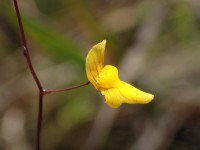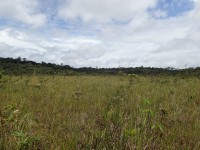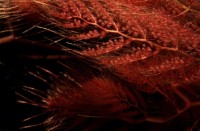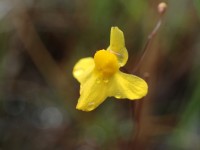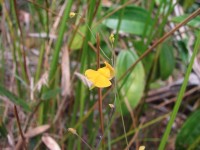Plant of the month
- Published:
- 13 May 2016
- Category:
- News
Bladderworts
The bladderworts (Utricularia spp.) belong to the family Lentibulariaceae. Most of them are aquatic, while some of them have chosen for wet terrestrial environments, like coastal swamp forests and savannahs. The Trésor reserve, with its wet savannahs, supplies a wonderful ecosystem for the bladderworts.
The bladderwort is a carnivorous plant. It lacks roots, but it has found some clever solutions that let it survive in oligotrophic (very poor soil) environments.
Bladderworts produce two type of leaves: ‘classical’ leaves (for photosynthesis) and alternative leaves that are situated on the ground or under water. These alternative leaves, also called ‘bladders’ measure between one and several millimetres. They function like traps. They attract their prey with small ‘branched hairs’, that could be mistaken for algae. Special glands in the bladders create a vacuum. If a hair is touched, the bladder will be opened instantly through the movement of a valve. All sufficiently small organisms will be sucked into the vacuum once they touch the hairs of the bladderwort.
The bladders contain enzymes that will digest the prey, once sucked in. Once soluble, the plant can assimilate the nutrients of its captured prey. Once the feast is finished, the bladderwort reactivates its trap.
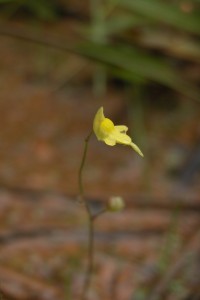
The small Utricularie pusilla is the most opportunistic; it is found for instance on the parking of the reserve © Renske Ek
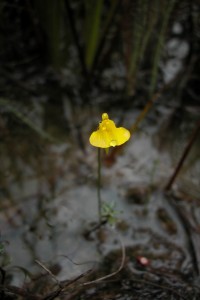
Utricularia nana © Benoit Villette
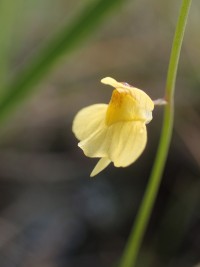
Utricularia hispida © Benoit Villette
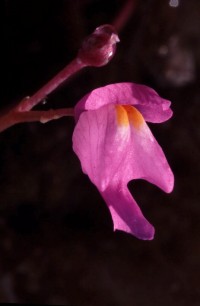
This beautiful bladderwort is aquatic and is found on the inundated parts of the Trésor savannah (Utricularia myriocysta) © Foto Natura 2002

Utricularia juncea est une des plus grandes espèces de Guyane atteignant les 50 cm de haut © Renske Ek

Utricularia viscosa, one of rare species without a yellow flower © Renske Ek
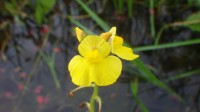
Utricularia foliosa is an entirely aquatic species of coastal swamp forests, only its flower is not subaquatic © Benoit Villette
